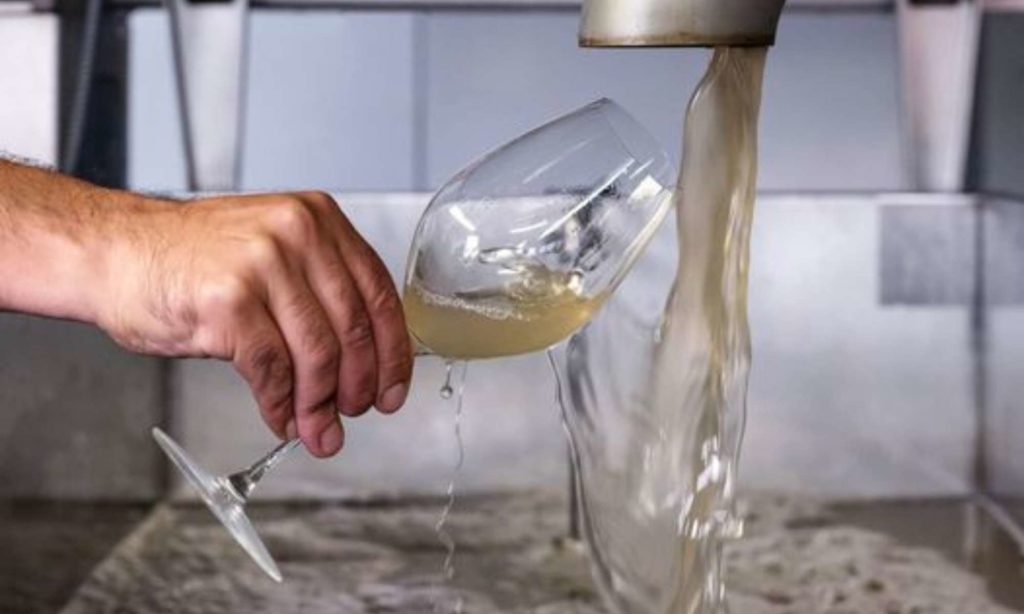Styles & varieties
The majority of English and Welsh still wines are white, produced either from a single variety or a blend, and range from dry to medium-dry with some dessert styles as well.
Bacchus
Bacchus has the potential to become Britain’s answer to Sauvignon Blanc, and is the main must-list style of English & Welsh wine after Classic Method sparkling styles.
New Zealand Sauvignon Blanc has seen phenomenal success. Its popularity is down to its assertive, recognisable, mouthwatering wines, full of flavour and zest. Bacchus is by no means a copy-cat as it has its own distinct signature flavours, but it shares enough of NZ Sauvignon’s essential characteristics to be considered a potential and more local alternative.
Wines produced from Bacchus can display different styles, from the fresh, herbaceous and grassy examples to more fruit-forward expressions. Bacchus is also versatile, producing bone-dry to delectably sweet wines. It is also made into sparkling wine, which is generally produced using a non-Classic Method to preserve the fresh flavours of the variety.
Food and wine matching
- Bacchus is best consumed young and served lightly chilled. There is no better time of year than when British summer fruit and vegetables are in season – English asparagus is a great partner (despite being notoriously tricky to match with wine) as the fruit and nettle flavours of Bacchus match it well.
- Seafood dishes and Thai food, as well as Indian cuisine, also provide a great match.
Chardonnay
Now the most widely planted variety in the UK, accounting for just under a third of total hectarage, winemakers have embraced the opportunity to produce still Chardonnay wines – particularly in years when the fruit displays greater ripeness, bursting with all the complex flavour compounds capable of producing a great white wine.
When successfully grown in Britain, it challenges some of the most impressive cool climate wine regions in the world. Chardonnay also adapts brilliantly to the added complexity of being fermented and/or aged in oak.
Malolactic conversion can add further creaminess and roundness to a wine, and with ageing, can draw out more complex flavours. It is early days and we are yet to see the full potential of English or Welsh still Chardonnay.
Food and Wine Matching
- Ideal with smoked salmon, seafood, and a wide range of fish dishes.
- Salads and goat’s cheese will also pair well with these wines at any time of the year.
Pinot Blanc and Pinot Gris
While still grown in small quantities, these more modern, recognisable grape varieties are popular. Both produce attractive, fresh and aromatic styles that age well and lend themselves to dry and off-dry styles.
Other varieties
There are many different varieties now grown in Britain; those from some decades back that primarily originate from Germany are now less prevalent. Disease resistant varieties (‘PiWi’ varieties) are beginning to make a real name for themselves in the UK – these grape varieties have a high resistance to fungal diseases and allow for a significant reduction in pesticide use. While less well-known, these innovative grape varieties provide an obvious alternative to conventional intensive crop protection.
These varieties include Seyval Blanc, Solaris, Phoenix and Orion. While some are produced as single or named varietal wines, many are blended.
‘Dry white’
If English still wines are remembered by those who drank them years ago, what they recall is most likely a slightly sweet wine with a Germanic name in a flute bottle.
The reality of the wines being made nowadays is that the vast majority are much better suited to the palate of today’s consumer.
A number of wines are produced from a blend of varieties and do not name the grape, but instead focus on a brand and wine name on the front label. Some supermarkets are also now selling ‘English Dry White’.
These wines are light, crisp and refreshing, often aromatic – their character embodies the fresh style produced in Britain; delicious as a ‘by the glass’ option and a refreshing apéritif.
Food and wine matching
- Enjoy as an apéritif but they also work with canapés, light meats and salads as well as seafood.


